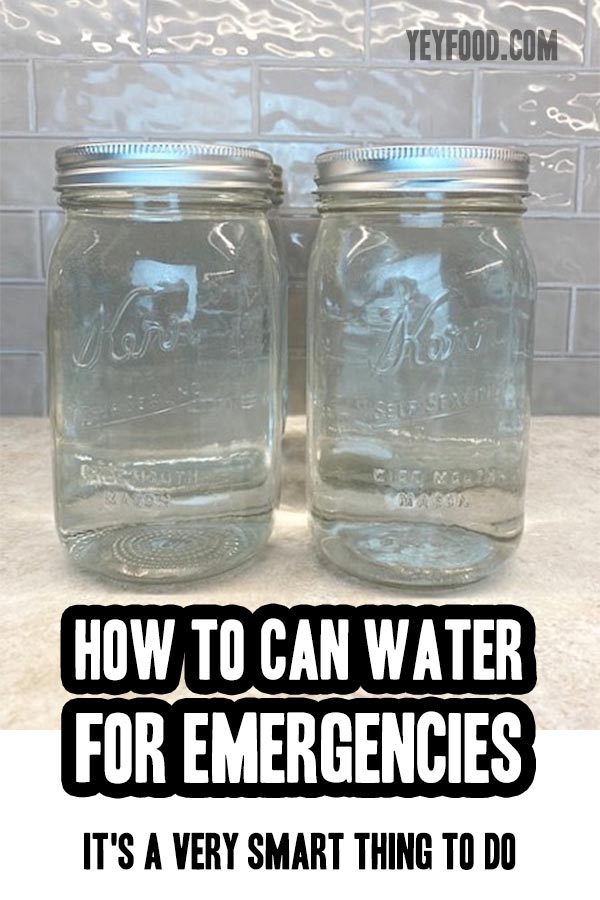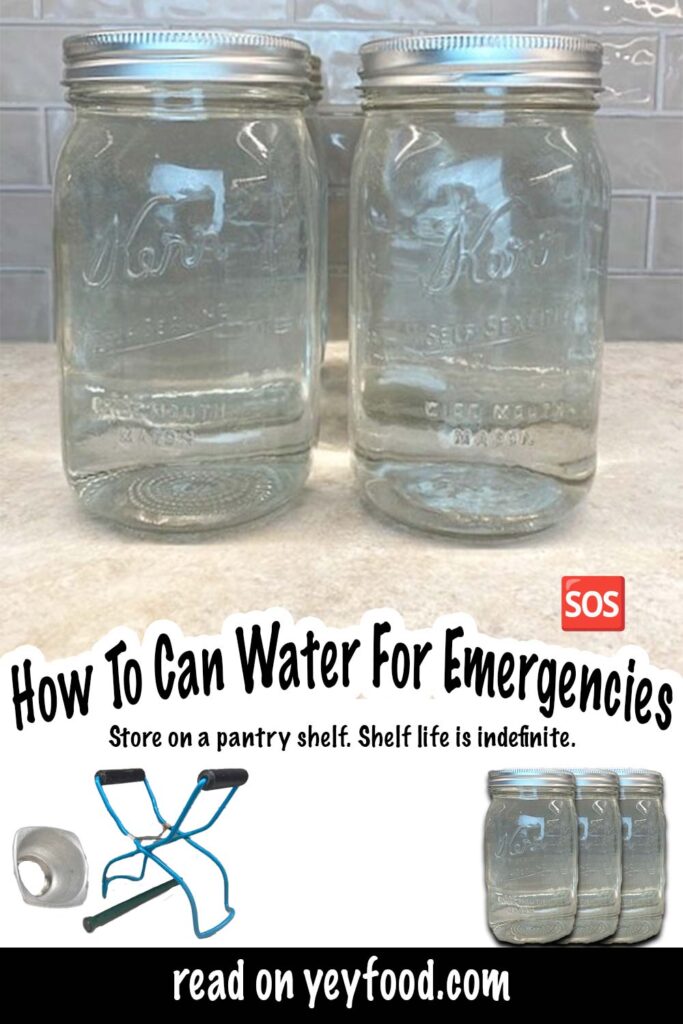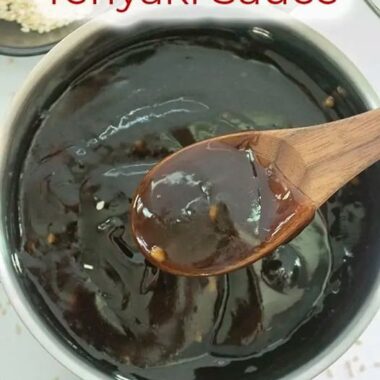How To Can Water For Emergencies
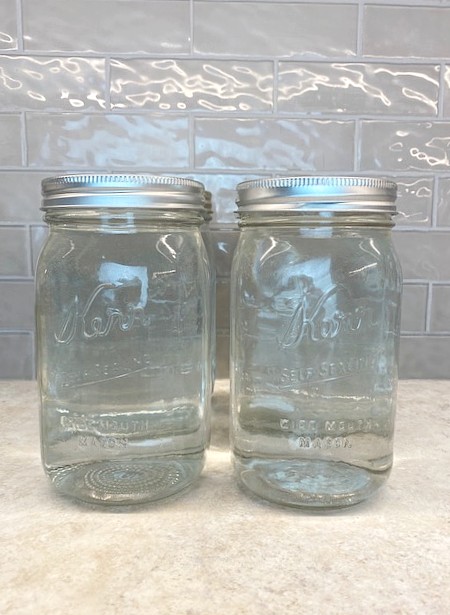
IT’S A VERY SMART THING TO DO.. SEE WHY!
I admit the first time I saw a post about how to can water, I thought they were nuts. I’m a veteran canner with well over 40 years of experience. I have canned meat, vegetables, and fruit. I have made pickles, jam, pie filling, and soup in a jar, but the thought of canning water never crossed my mind, not once!
I assumed it was something folks on the fringes did, but for all of you who are shocked at my ignorance, I have come to my senses, and I get it. My inner boy scout has awakened, and I want to “be prepared.”
Do you know what flipped the switch in my head? A decade-old publication from one of the squarest, most conservative bastions I know, The University of Nebraska-Lincoln Extension Institute of Agriculture and Natural Resources.
Out here in Nebraska, we feel snugly insulated in many ways from natural disasters. Many of us could even be described as complacent because we don’t have hurricanes or earthquakes of any seismic proportions here. Flooding, ice storms, and tornadoes happen, but for the most part, services are restored quickly.
Until the day it doesn’t. And it can happen any time, anywhere.
Just this week, the well stopped running at our rural home. For about twenty-four hours, we could not shower, wash dishes, or flush the toilets. We had electricity and some bottled water on hand, but what would happen if the days stretched into a week? What if the situation was widespread?
How Much Water Do We Need To Store In The Event Of An Emergency
| Number of People | Total Water Needed (Gallons) |
|---|---|
| 1 | 49 |
| 2 | 98 |
| 3 | 147 |
| 4 | 196 |
| 5 | 245 |
| 6 | 294 |
| 7 | 343 |
| 8 | 392 |
| 9 | 441 |
| 10 | 490 |
Most of us assume we will always have clean, safe water for drinking and bathing. Globally, about one in three humans does not have access to what we take for granted daily.
In an emergency, an ample supply of water is a priority. The needs vary by age, physical conditions, activity, and weather, but the bare minimum amount of clean water needed is a gallon per person per day. This amount of water allows for drinking, food preparation, and a little for personal hygiene.
Think about it! If a family of four lost access to clean water for a week, they would need at least 28 gallons of water on hand to meet the most minimal requirements.
Bottled water is not always strictly regulated for safety, and over time, the plastic containers break down, and chemicals can leach into the water. Water from a private well is subject to contaminants that can only be detected by testing. That is why it’s good to learn how to preserve water safely if there is an interruption or compromise to the usual supply we all have come to expect.
Canning water in glass mason jars is a smart, safe way to ensure a water supply to meet needs in case of an emergency.
Here’s Everything You’ll Need And How To Safely Can Water
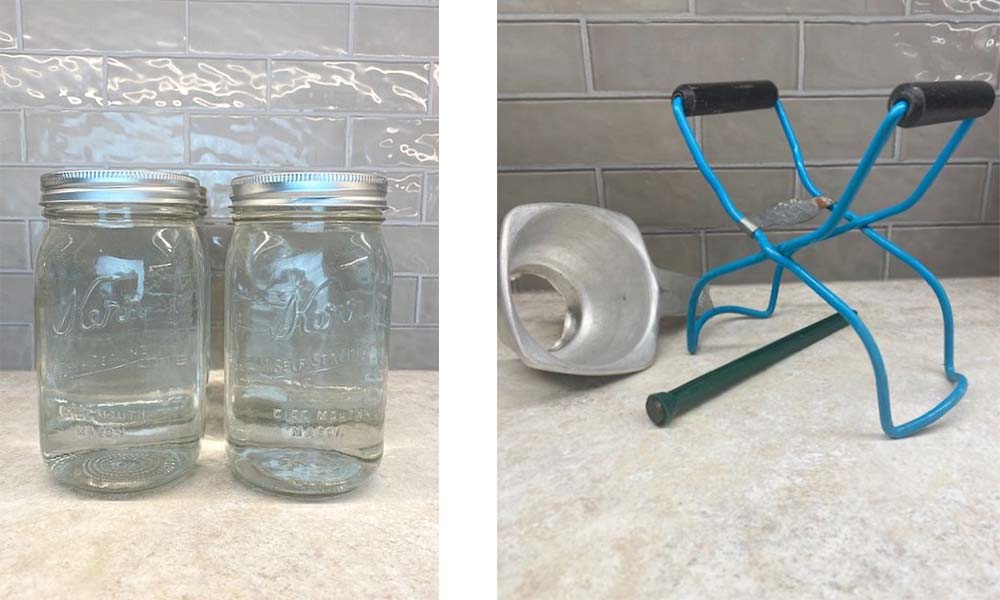
All that’s needed to make water sterile and safe for long-term use is a boiling water bath. If you have a pressure canner or can borrow one, here’s a good post that will teach you how to do it that way.
You will need canning jars with screw-on rings and new flats. Canning flats have been hard to find in stores since the COVID pandemic, but they are available online. New, unused flats are essential to forming a vacuum-tight seal on the jars. Quart size jars are the most readily available, but half-gallon sizes are out there, too.
To ensure a good seal, you will need a stockpot or canner that’s deep enough to cover a quart jar with the lid on by at least an inch. Most quart jars are about 8.5″ tall. Neither one of my large soup pots are deep enough. I will need to use one of my great big heavy canners instead.
Tall stockpots are widely available. You might discover it’s very handy to have a tall stockpot in your kitchen bag of tricks! The old-style water bath canners are available for purchase and might even show up at garage sales or second-hand stores. They are often dark blue speckled enamel. Just double-check there’s not a rusted-out spot in the bottom of a used one!
A large canner or tall stockpot might be a good purchase to co-op with friends and family so you can all lay in a good emergency supply of water.
Here Are Some Handy Things You Should Have When You Are Canning
Bear in mind that my canning tools are old and have seen many, many years of use, but you can still find them all, they won’t cost a lot, and yours will last for years, too! I can’t tell you how many times I find a use for each piece, even when I’m not canning!
What you see here is an old aluminum canning funnel. I think the new ones are plastic these days, a jar lifter (the blue thing), and a magnetic lid lifter. The last little item was a gift from my sister and niece after watching me burn my fingers without one!
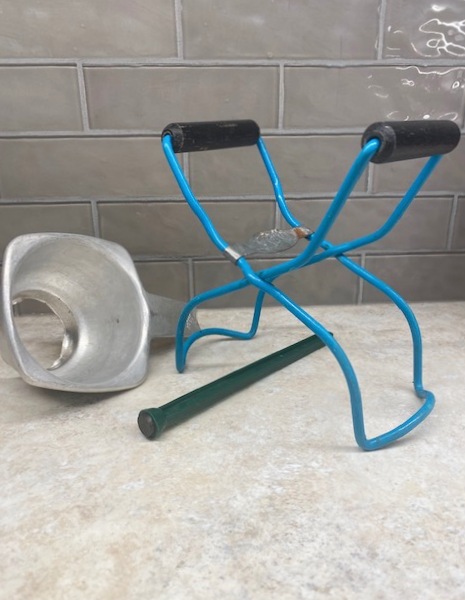
Here’s How To Make Sure Your Family Has Safe Drinking Water In An Emergency
It’s incredibly simple!
Run the canning jars through the dishwasher or wash them in hot soapy water and rinse them thoroughly. Make sure to check the rims of the jars for nicks. If there’s a nick, it will not seal properly.
Fill a tall pot with clean water and boil it at a full rolling boil for 5 or 10 minutes.
Put the flats (lids) into a pot of boiling water. You can take it off the stove when you’re ready to fill the jars.
Fill a second tall stockpot or canner about halfway full of water and preheat the water to a simmer. Our water is hard so I like to add about 1/4 cup of vinegar to the canner because it helps keeps the jars from getting the unsightly coating of lime.
Use a canning funnel to ladle the boiling water into jars, leaving half an inch of space between the water and the lid.
Put a flat on each jar, screw on a canning ring, and tighten it by hand.
Use a jar lifter to load the jars into the water bath canner and bring the canner to a full rolling boil. Add more boiling water if needed to cover the jars with at least an inch of water!
Set a timer for ten minutes once the water has come to a full rolling boil.
You can find altitude adjustments for water bath canning and loads of other helpful hints in this excellent post.
When the timer goes off, use your jar lifter to carefully remove each jar from the canner and set it on a heat-resistant surface with a thick towel laid on it. Leave at least an inch between jars.
Allow the jars to cool completely without disturbing them.
When they are completely cool, check the seals. If any do not seal, replace the flat and re-process. The rings can be removed and reused once the jars are cool and have sealed.
Store on a pantry shelf. Shelf life is indefinite.
That’s all it takes, my friends, to make sure you have a clean, sterile supply of water in the case of an emergency interruption to your water supply! I hope you never need to use it, but peace of mind is wonderful, don’t you agree?
If you enjoyed this recipe, please share it on your social media! I would love for more people to try this delicious and easy-to-make dessert. If you have any questions or feedback, please feel free to leave a comment below. I would love to hear from you! Shhh… Join our secret foodie group on Facebook.
More recipes from us
4 Reasons You Should Freeze Some Sweet Corn This Summer
How To Make The White BBQ Sauce That’s Fascinated Us Since 1925
Dilly Pickled Green Beans You Make In Your Refrigerator
If you like these recipes, you are our people! You can check some related articles below or search via categories on the right. But, be warned; you will be on here for hours. Enjoy!
So, please share this recipe on your social media accounts like Facebook, Instagram, Twitter, and Pinterest. We would be honored and ever so grateful; thank you
